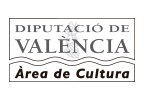Once more the MuVIM brings a feminist woman artist on the occasion of 8th March and 25th November, as it has done since 2016. A feminist and artist woman who will star the great MuVIM Stained Glass Window. November and March are two months when we women complaint about the experiences we live every day for the sake of being women: discrimination in its different faces. That discrimination which is forbidden by the Constitution but that we continue to fight against day after day without being already able of discerning the end.
Art is also a way to express denounce and explain the facts that cause it. This exhibition is a sample of this complaint. It is said that “the mean is the message” and art, which is also ideology, is the mean which reflects the power background throughout history, and this is the message.
From the Ancient Greece and the Imperial Rome, passing through all the periods which had enshrined the most prominent art works, the presence of women as a pictorial subject has been reduced to two conditions for which they are recognised: mothers and objects of desire.
Despite the “message” the artistic “mean” has reflected over history, women had also paved their way. It is certain that discrimination is obvious in the bestowal of prizes and awards, but it is also true that proposals like this one, offered by the MuVIM year after year, flatten and broaden this way.
Amèlia Alba, curator of the Stained Glass Window stared by the Iranian artist Nasrin Tabaeian, said “The MuVIM has threaded the needle and is working to make women artists visible in their programming, a decision which is possible thanks to the fact that the museum counts on a staff formed by women and men who are firmly committed to gender equality and to the eradication of gender-based violence…” We have to add that the despise of art works by women and their reality is the result of the violent attitude of those who keep them [women] within the stereotypes which permit they continue to be manipulated.
What the artist and creator of this project, named Experiential Aprons, does is rescue a part of the women’s reality and show it.

In addition to this particular aspiration of María José Planells, the apron express the subordinated position of the woman and her tasks – always clearly distinguished from those of man - both wage labour and those tasks developed when “ she does not work, since at home what she does is just to fulfill her housewife duty as daughter, wife and mother”. This role is so assimilated to the woman condition that even in the folkloric attire, richer in jewels and ornaments, the apron is maintained as an essential clothing which undeniably refers to the women’s function throughout history. And at the other end, we find that on 8th March demonstrations some protesters wore it.
In the same vein, the title suggested by Mª José Planells “Experiential Aprons” is significant of the message she wants to transmit.
The work of the artist reflects a particular reality closely linked to an activity which is very significant of Valencian economic, social and cultural life: the orange farming. Furthermore, the Industrial Revolution provided technical facilities to use underground water, breaking in this way the centuries-old balance between irrigation and dry farming. From this moment on, the commercialization of oranges implied specific tasks for women who worked with an “APRON”.
The artist also points out the positive aspects of this change: “it meant a socializing factor which made possible for women to establish a friendship and share their common problems” And this shows a specific feature of communication among women: not to raise any border between private and public spheres.
Júlia Sevilla Merino
Cum laude PhD in Fine Arts from the Polytechnic University of Valencia.
Master’s degree in Means of Graphical Printing, Illustration and Artistic Coining from the National Coinage and Stamp Factory – Royal Mint in Madrid.
She was granted in 2001 with an scholarship from the Foreign Affairs Ministry -AECI to further her studies in the Faculty of Fine Arts in the National University of Colombia in Bogotá and, in 2002 in the Workshop of Visual Arts in the National University of the Northeast in Resistencia, Argentina.
The following years she was awarded with different artistic grants and prizes such as: the Artistic Creation Talens grant, the Visual Art grant in 2003 from the Conselleria de Cultura i Educació de la Generalitat Valenciana, winner of the Special Mention from the jury in the XI Biennal Competition of Young Painters from the Generalitat de Catalunya; prize-acquisition Fons d’Art Contemporani from the Polytechnic University of Valencia; granted in the I Campus de Verano de las Artes de Guía (Gran Canaria), grant in the International Residence of Artists of Ifitry in Essaouira (Morocco); aid for the promotion of Spanish Contemporary Art from the Spanish Ministry of Culture; Casa Velázquez grant of residence , Académie de France, Madrid; Laboratorios Comunes de Creación de Artes Visuales grant from the Tres Patios Foundation and the mayor’s office of Medellín (Colombia). Alfons Roig Aid for Plastic Arts 2014-2015 from the Diputació de Valencia; and the grant from the Joan Miró Foundation (Mallorca).
In 2014 she stands out with the first prize in the Graphical Art Competition of Young Creators from the Real Academia de Bellas Artes de San Fernando, National Chalcography, Madrid.
Her work has been exhibited in a great number of both collective and individual exhibitions in Spain, France, Italy, Mexico, Colombia, Argentina and Morocco.




